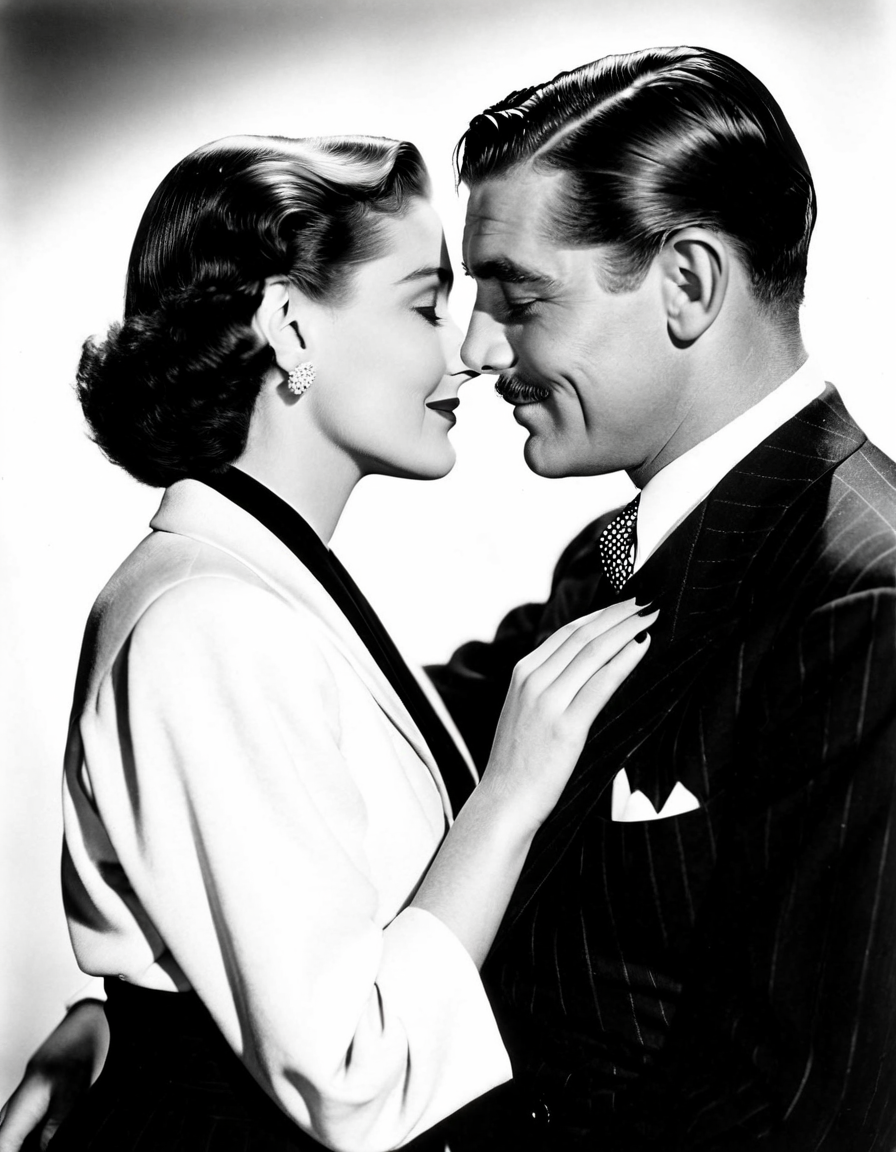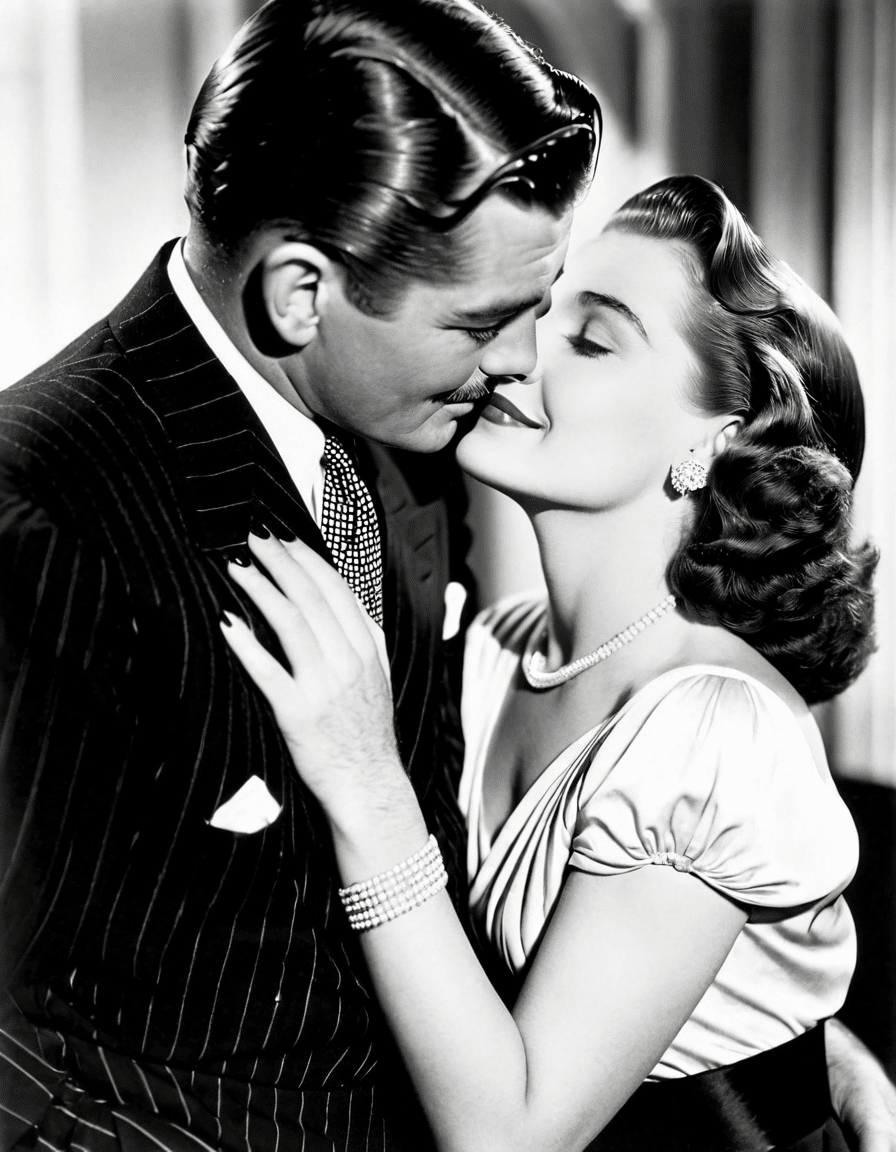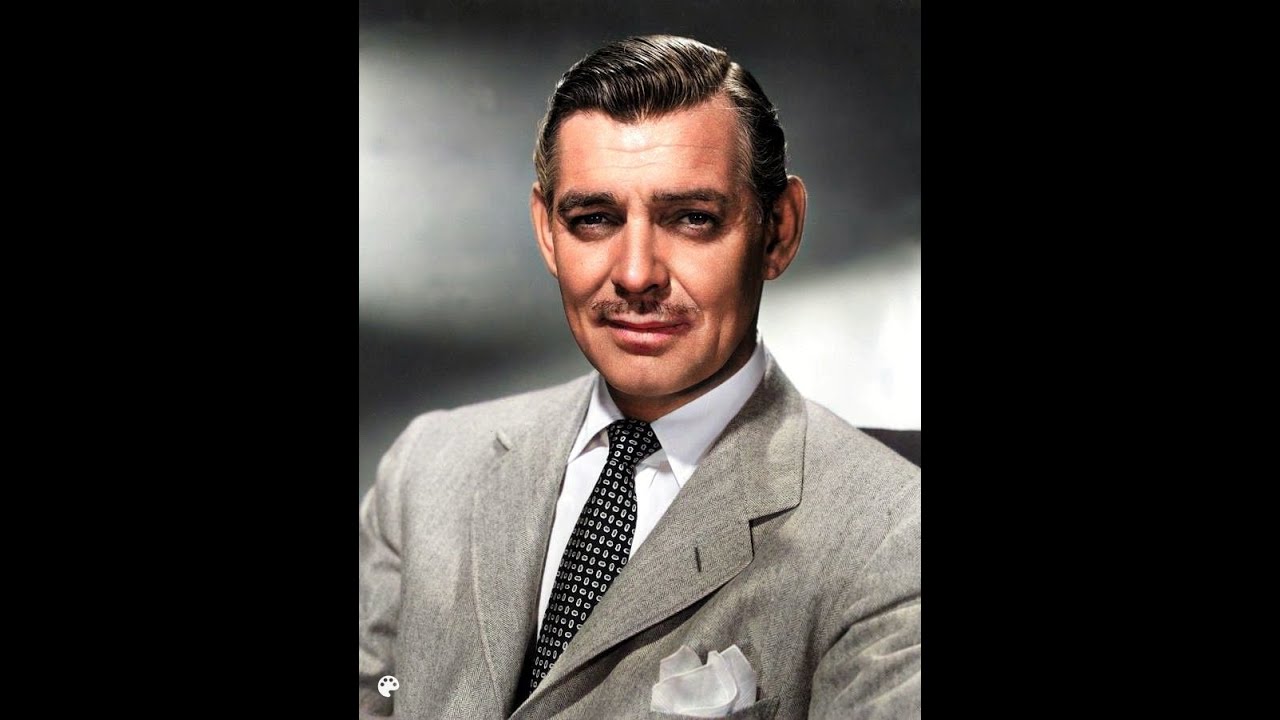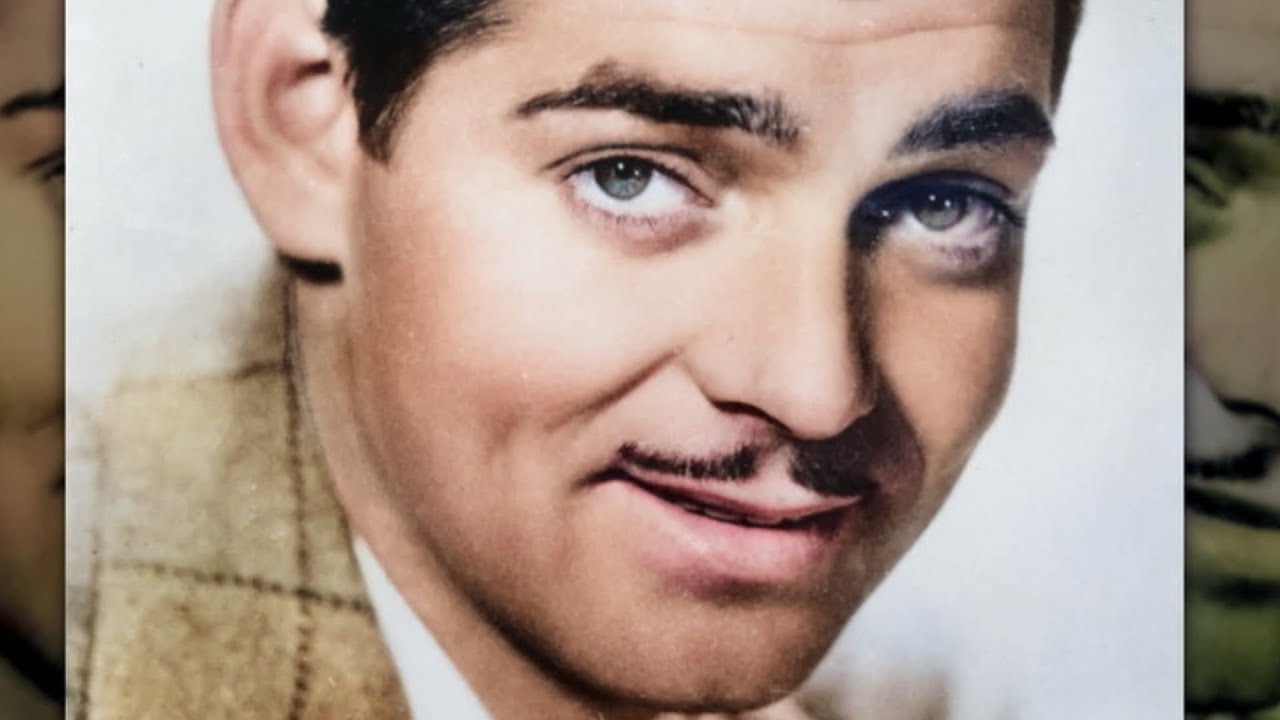The Enduring Legacy of Clark Gable in Hollywood
Clark Gable remains an indelible figure in American cinema, not just as a leading man but as the quintessential symbol of Hollywood glamour. With his signature mustache and dazzling smile, Gable captivated audiences back in the golden age of Hollywood. His performances in classics like “Gone with the Wind,” where he brought Rhett Butler to life, cemented his status as one of the greatest stars of all time. Gable embodied a unique blend of rugged masculinity and irresistible charm, influencing generations of actors and setting a standard for both screen presence and personal style.
Beyond just his roles, Gable’s natural charisma made him an icon. His ease in front of the camera lit up the silver screen and transcended the bounds of emotion, portraying love and conflict with an authenticity that feels relevant even today. His impact extended far beyond the 1930s and ’40s, where he set a benchmark for Hollywood’s leading men, guiding complex portrayals that defined masculinity’s evolution in film.
In today’s cinematic landscape, Clark Gable continues to be referenced and revered. His ethos of charm and emotional depth laid the groundwork for icons like Russell Crowe in “Gladiator” and Jack Nicholson in “One Flew Over the Cuckoo’s Nest.” As new generations of actors emerge, the hallmark of Gable’s talent still shines through, reminding us why he remains an essential figure in Hollywood’s rich tapestry of cinema.

Top 5 Actors Whose Styles Were Inspired by Clark Gable
Jack Nicholson is renowned for his rebellious charm, often channeling a touch of darkness akin to Gable’s complexity. Think about Nicholson in “The Shining” or “As Good As It Gets”; his ability to balance charm with darker undertones echoes Gable’s knack for playing layered characters.
With a suave persona that often mirrors Gable’s effortless cool, Warren Beatty had a major hand in redefining the romantic lead. In films like “Bonnie and Clyde,” Beatty’s brooding charm feels reminiscent of the classic allure Gable exuded, reminding us of an era where true masculinity was dashing yet delicate.
Gable’s spirit resonates powerfully in Russell Crowe’s performances. In the Oscar-winning “Gladiator,” Crowe’s commanding presence and emotional resonance evoke the same robust masculinity that Gable showcased, furthering the evolution of male protagonists onscreen.
While best recognized as a leading lady, Bergman’s chemistry with Gable in films like “Mentioning the King” highlighted her own brand of Hollywood allure. The partnership transcended traditional gender roles, as both actors worked together to challenge norms, creating complex characters that stood the test of time.
Not actors but visionary directors, both Spielberg and Scott draw on the Gable legacy through their films. Spielberg’s “Indiana Jones” series features heroes infused with Gable’s charisma, while Scott’s historical epics encapsulate that larger-than-life persona, echoing the magic that Gable brought to the screen.
A Glamorous Revolution: Clark Gable’s Fashion Influence
Gable’s influence extended far beyond acting; he revolutionized fashion for men in Hollywood. His iconic style—characterized by impeccably fitted suits and a relaxed demeanor—set the gold standard for masculine elegance. The way he wore tailored clothing created a look that still resonates today, influencing countless actors and style icons.
Look at Daniel Craig, for instance, who channels that classic Gable charm in his portrayal of James Bond. Craig’s sharp suits echo Gable’s fashion legacy, proving that 1930s glamour remains just as appealing to modern audiences. Moreover, actors like Henry Cavill showcase that tailored sophistication, crafting that dapper style that reflects Gable’s timeless influence.
While Gable himself might have been a man of his era, the aesthetics and ideals he embodied continue to shape the fashion world. Whether in streetwear or red carpet looks, the emphasis on steadfast elegance in men’s clothing can often be traced back to Gable’s influence, demonstrating the enduring power of his style in contemporary culture.

The Evolution of Masculinity in Film Through Gable’s Lens
Gable’s portrayal of masculinity deviated from the over-the-top strongman archetype of his predecessors. Instead, he offered characters who were relatable, emotional, and complex. His nuanced performances opened doors for later filmmakers to present male characters that navigated love and conflict in a more profound way.
Through his roles, we witness a shift where men could express vulnerability without sacrificing their strength. This evolution in masculinity has paved the way for representations in films such as Ridley Scott’s “Gladiator” and Steven Spielberg’s “Saving Private Ryan,” where complex male figures grapple with inner conflict and external challenges.
Gable’s approach created a blueprint for modern cinema, granting subsequent actors like Jack Nicholson the freedom to explore more layered characterizations. This shift reflects an ongoing trend where male protagonists are not just heroes but complex individuals capable of experiencing doubt, fear, and love.
The Unsung Influence of Clark Gable on Today’s Actors
Today’s actors owe a considerable debt to Clark Gable’s legacy. Chris Hemsworth and Michael B. Jordan embody a lineage stemming from Gable’s foundation—combining raw masculinity with emotional depth. This blend is continually evident in their performances, which draw on Gable’s foundational principles even while exploring new narratives.
Consider Hemsworth in “Thor,” where he marries physicality with an emotional arc, much like Gable did in his romantic and dramatic roles. Likewise, Michael B. Jordan in “Creed” channels Gable’s charisma, bringing layers to his character that resonate with audiences. Their performances highlight Gable’s lasting impact, proving that his essence infuses contemporary cinema.
This speaks not just to mode of acting but also the diversity of stories that unfold onscreen today; Gable’s influence enables a broader range of narratives that engage and captivate, resonating with audiences of all types. Whether through action, drama, or romance, one can trace the lineage of talent back to Gable’s original flair.
Celebrating Clark Gable’s Timeless Resurgence
The allure of Clark Gable remains vibrant in today’s cinematic world. Filmmakers and actors often channel Gable’s charm and charisma in their performances, bringing his essence into modern storytelling. His impact is felt not just in the classic films of yesteryear, but also in today’s blockbuster hits and cultural phenomena.
Filmmakers’ ambition to tell stories layered in emotion and complexity nods to Gable’s mastery, making his legacy a contemporary beacon in Hollywood. As audiences, we feel Gable’s influence whenever we engage with characters who embody that blend of strength and vulnerability, bridging the golden age of Hollywood with today’s artistry.
So, the next time you watch a film with a charismatic leading man or see an impeccably dressed actor on the red carpet, remember that the threads of Clark Gable’s legacy run deep. His multifaceted influence not only defines the glamour of Hollywood but also reminds us of cinema’s rich journey of storytelling—an everlasting narrative thread captivating audiences for decades to come.
Clark Gable: The Iconic Star of Hollywood Glamour
The Charisma Behind the Legend
Clark Gable’s charm and iconic presence made him the quintessential Hollywood heartthrob. Did you know that Gable, often referred to as the “King of Hollywood,” was discovered in a theater production? Despite his rugged good looks, he faced many rejections early on, but he kept at it, proving that persistence pays off. Gable’s breakthrough came when he landed a role in “It Happened One Night,” which secured his status as a leading man. Speaking of leading roles, today’s actors, like Daniel Kaluuya, carry the torch of charisma and talent that Gable so famously embodied.
Behind the Scenes: The Man and His Art
When he wasn’t dazzling audiences on-screen, Clark Gable led a fascinating life off-camera. Often considered a man’s man, he enjoyed hunting, fishing, and indulging in the great outdoors. His personal life, however, was a different story, filled with a mix of tumult and romance. Gable was married five times, with his last wife, Carole Lombard, holding a special place in his heart until her untimely death. Interestingly, just as the Bet Awards 2025 are set to honor contemporary talents, Gable’s legacy continues to inspire and influence performances across genres and generations.
Fun Facts: Little-Known Tidbits
Here’s a delightful bonanza of trivia about the legend. Did you know that Gable was once a cowboy in a traveling show before embracing Hollywood? His rugged persona truly shone through in films like “Gone with the Wind,” where his character Rhett Butler became an enduring symbol of masculinity. Fun fact: Gable’s famous line, “Frankly, my dear, I don’t give a damn,” has echoed through decades, much like the unforgettable performances of stars like Debbie Allen in dance and theater.
Fans might be surprised to learn that Gable had a soft spot for pets, especially dogs. He even brought his beloved pooch to movie sets! Speaking of talent and versatility, there’s a modern-day artist, Melissa Marie Curtis, who embodies a similar spirit of creativity and passion in her work. Gable’s charm wasn’t just limited to the silver screen; it was ingrained in his life, making him a true icon of American cinema. As we look back and recognize such talents, it’s clear Gable’s legacy is intertwined with the evolution of Hollywood glamour.








